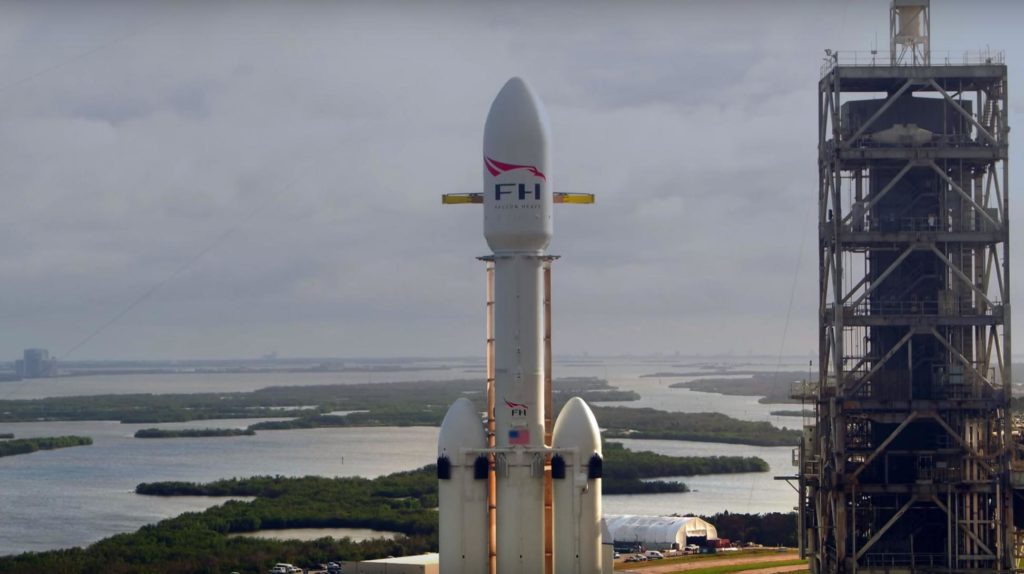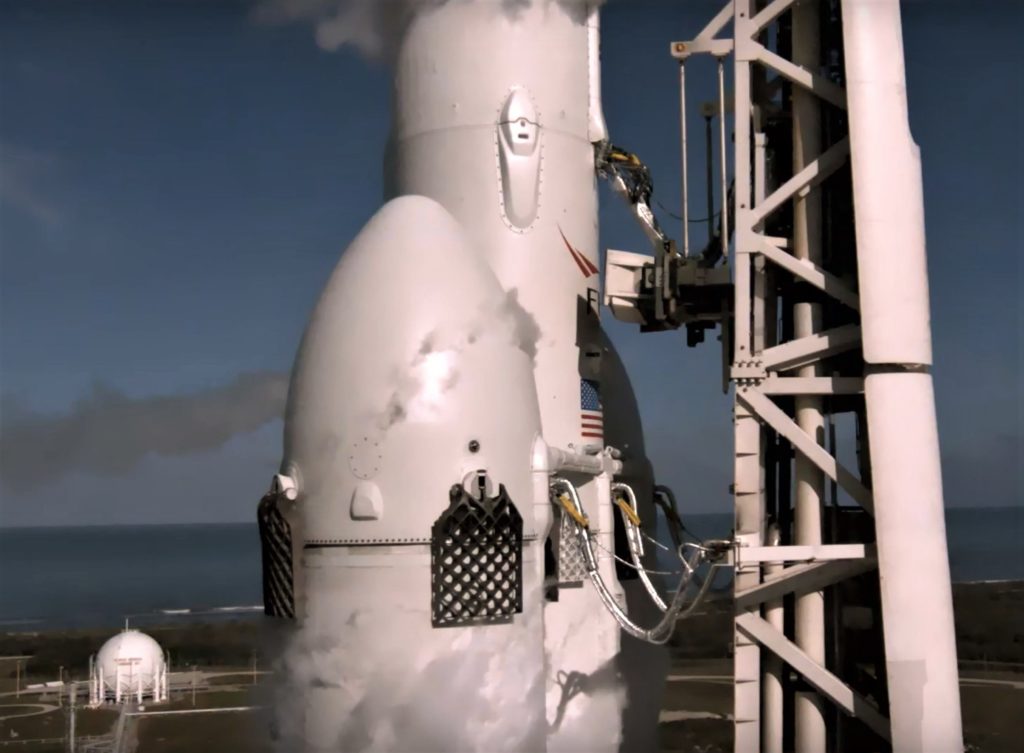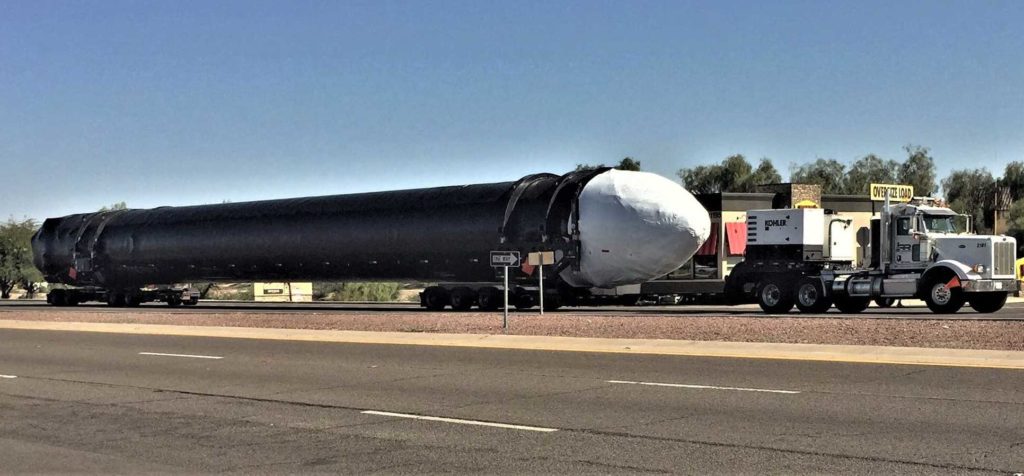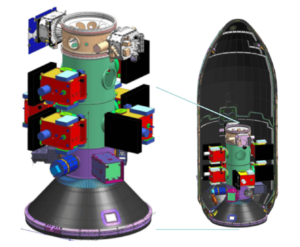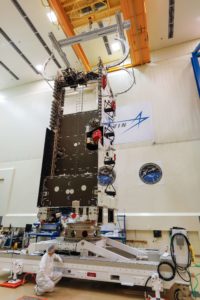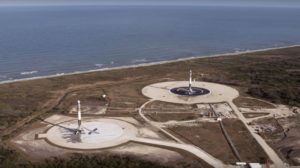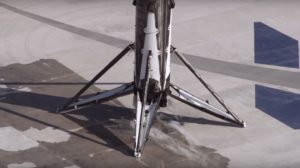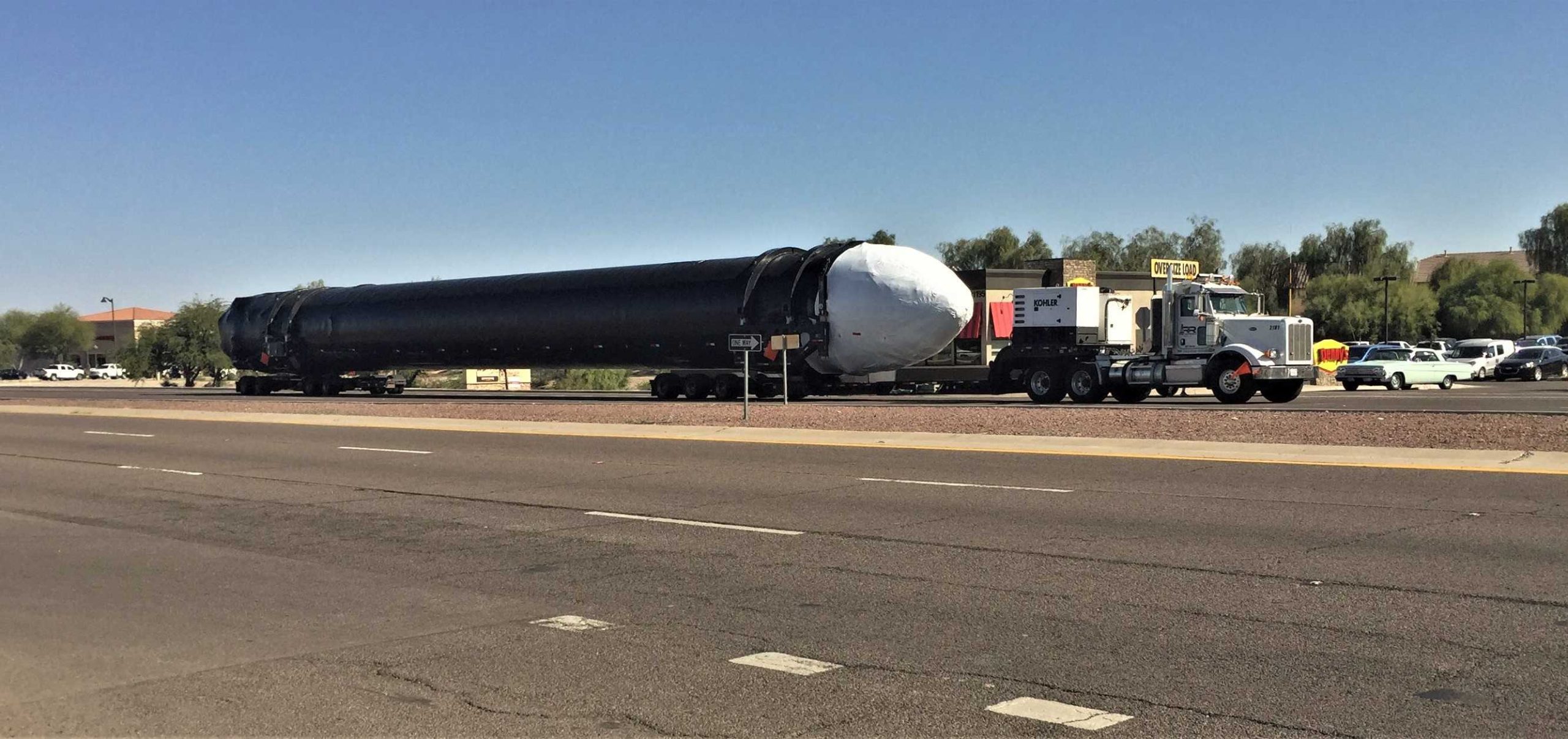
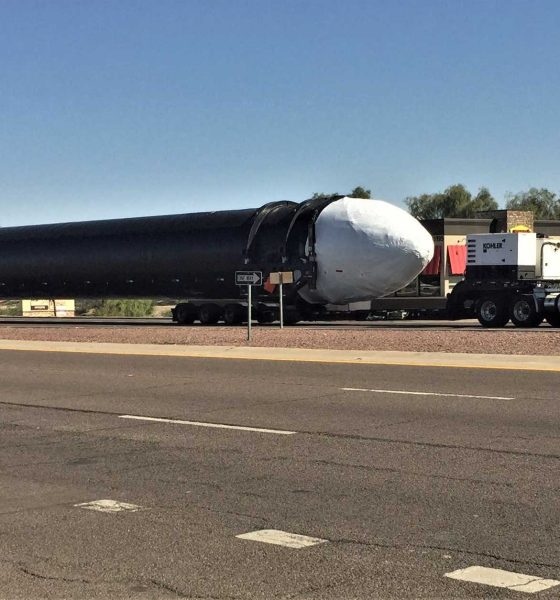
News
SpaceX’s next-gen Falcon Heavy closer to reality as side booster leaves factory
A duo of rocket spottings on November 9th and 10th confirm that SpaceX’s next Falcon Heavy rocket – an amalgamation of three Falcon 9 boosters, an upper stage, and extensive modifications – is already in the late stages of manufacturing and is nearing the beginning of integrated structural and static fire testing.
As of now, this Falcon Heavy side booster could end up supporting either or both of two near-term launch contracts in place for the rocket, communications satellite Arabsat 6A or the US Air Force’s second Space Test Program (STP-2) launch
SpaceX's second Falcon Heavy is slowly but surely coming together 😀 https://t.co/AYJsQ8Mld5
— Eric Ralph (@13ericralph31) November 13, 2018
The question of the hour – at least for Falcon Heavy – is which of those two available payloads will be atop the rocket on its first truly commercial launch. While suboptimal, a few general characteristics of each payload, SpaceX’s history of commercial launches, and Falcon Heavy itself can offer a hint or two.
Triple the rocket, triple the trouble
Thanks in large part to the fact that the first integrated Falcon Heavy was composed of two relatively old Falcon 9 booster variants and a center core that was quite literally a one-off rocket, the process of reenginering and building another Falcon Heavy rocket off of the family’s newest Block 5 variant has likely been far harder than simply building another Falcon Heavy. Although all three original Falcon Heavy boosters (B1023, B1025, and B1033) were in the same league as Block 5, their Block 2 and Block 3 hardware was designed for approximately 10% less thrust and are almost entirely different vehicles from the perspective of structures and avionics.
Perhaps even more importantly, it’s unknown whether Falcon Heavy Block 1 (for lack of a better descriptor) was designed with serious reusability in mind, at least in the same sense as Falcon 9 Block 5 was. For instance, a major portion of the rocket’s extreme complexity and difficulties lies in the basic need to transmit three times as much thrust through the center core. To do that and do it without rocket-powered separation mechanisms, SpaceX had to develop structural attachments and connections capable of surviving unbelievable mechanical and thermal stresses for minutes on end.
- The first Falcon Heavy was a Frankenstein’s monster of sorts. (SpaceX)
- Falcon Heavy is seen here lifting off during its spectacular launch debut. (SpaceX)
- A Falcon Heavy side booster was spotted eastbound in Arizona on November 10th. (Reddit – beast-sam)
Clearly, this was an unfathomably difficult problem to solve in such a manner that Falcon Heavy would work at all the first time. Factor in the strategic need for those same components to survive repeated cycles of those stresses with minimal refurbishment in between and the problem at hand likely becomes a magnitude more difficult, at least. In large part, this helps to explain why there will end up being a minimum of 11-12 months between Falcon Heavy’s first and second launches.
Arabsat or STP?
Over the course of SpaceX’s last 2-3 years of commercial launch activity, the company and its customers have demonstrated time and time again a reliable pattern: commercial customers (in the sense of private entities) are far more willing to take risks with new technologies than SpaceX’s government customers. NASA’s Commercial Resupply Services is the exception for the latter group but also has no Falcon Heavy launch contracts. For Falcon Heavy, there are thus main three options at hand.
- Arabsat 6A launches first with 1-2 flight-proven boosters; the Air Force’s STP-2 mission flies on an all-new Falcon Heavy 4-6 months later.
- SpaceX builds entirely new Falcon Heavy rockets for both customers, requiring four new side boosters and two new center cores.
- STP-2 launches first on an all-new Falcon Heavy; Arabsat 6A launches second on the first flight-proven Falcon Heavy after 6+ months of additional delays.
- The USAF’s STP-2, a combination of a few dozen different satellites. (USAF)
- The communications satellite Arabsat-6A. (Lockheed Martin)
- LZ-1 and LZ-2, circa February 2018. (SpaceX)
- A closeup of one of Falcon Heavy’s side boosters after landing. (SpaceX)
Arabsat is far more likely to accept – for a significant discount – a ride aboard the first flight-proven Falcon Heavy, especially if it means preventing more major launch delays. If the Falcon Heavy side booster spotted eastbound last week is a refurbished Block 5 booster rather than a new rocket, than option 1 is the easy choice for most probable outcome. The real pack leader for Falcon Heavy Flight 2, however, will be the completion of a new Block 5 center core and its shipment to Texas for structural and static fire testing.
Time will tell. For now, a completed Falcon Heavy side booster is the best sign yet that SpaceX may manage the rocket’s second launch in the first quarter of 2019, whichever launch that may be.

News
Tesla begins Holiday Update rollout with some surprise features
On Monday, just a few days after Tesla first announced the Holiday Update, people started reporting that it was being deployed to owners.
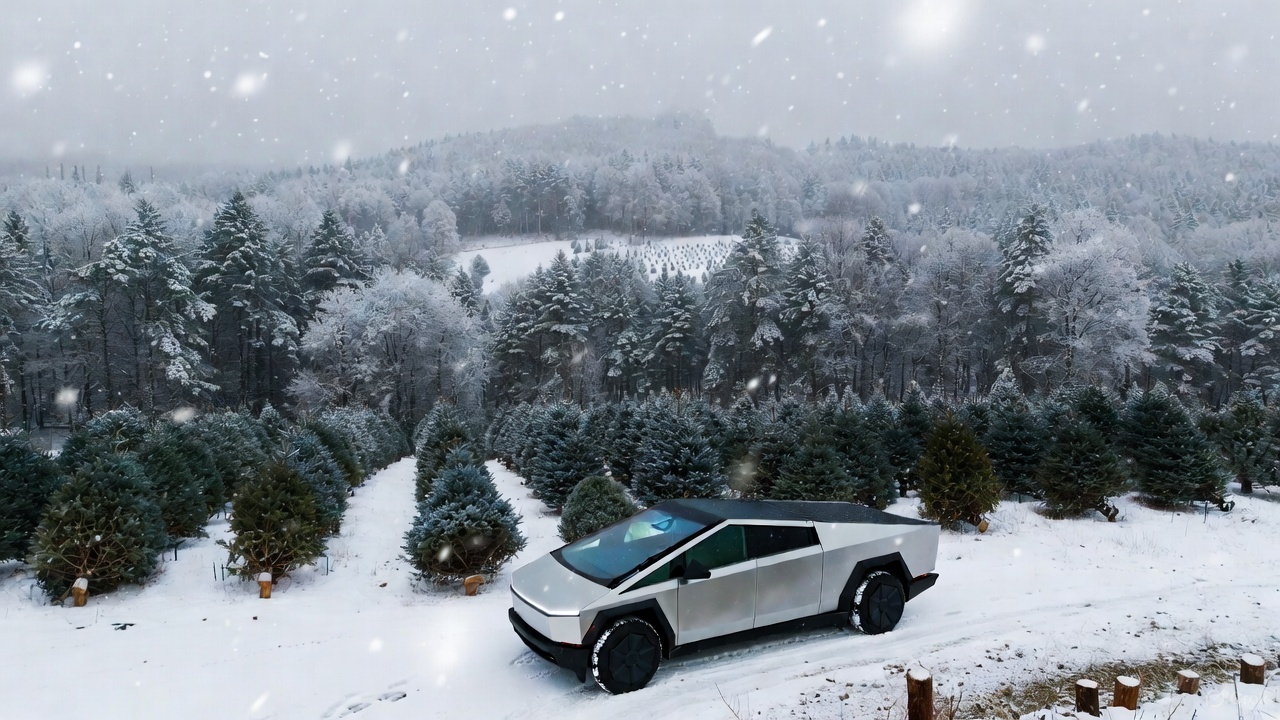
Tesla has started the rollout of the 2025 Holiday Update, as several owners reported it had arrived in their cars via a software update.
Tesla’s Holiday Update is rolling out as Software Version 2025.44.25.1, and includes several new features. We did an extensive breakdown of what was included in another article, but we’ll list the new additions below:
- Grok with Navigation Commands (Beta) – Grok will now add and edit destinations.
- Tesla Photobooth – Take pictures inside your car using the cabin-facing camera
- Dog Mode Live Activity – Check on your four-legged friend on your phone through periodic snapshots taken of the cabin
- Dashcam Viewer Update – Includes new metrics, like steering wheel angle, speed, and more
- Santa Mode – New graphics, trees, and a lock chime
- Light Show Update – Addition of Jingle Rush light show
- Custom Wraps and License Plates – Colorizer now allows you to customize your vehicle even further, with custom patterns, license plates, and tint
- Navigation Improvements – Easier layout and setup
- Supercharger Site Map – Starting at 18 pilot locations, a 3D view of the Supercharger you’re visiting will be available
- Automatic Carpool Lane Routing – Navigation will utilize carpool lanes if enabled
- Phone Left Behind Chime – Your car will now tell you if you left a phone inside
- Charge Limit Per Location – Set a charge limit for each location
- ISS Docking Simulator – New game
- Additional Improvements – Turn off wireless charging pad, Spotify improvements, Rainbow Rave Cave, Lock Sound TRON addition
On Monday, just a few days after Tesla first announced the Holiday Update, people started reporting that it was being deployed to owners.
We noticed a new Tesla software update 2025.44.25.1 on a Model Y AWD LR (2022) in Florida, United States. View the rollout of this update here: https://t.co/rPqISQaNkM
— Teslascope (@teslascope) December 8, 2025
It seems the release is a bit of an apology to a particular group, as it has only made its way to Hardware 3 vehicles, particularly the ones using the AMD Ryzen chip.
Tesla has excluded FSD-purchased and subscribed vehicles that are utilizing Hardware 3, so it seems there is a strategy to this limited rollout.
Two Surprise Additions
Tesla has added two additional features with the Holiday Update, which include a new Storage Space for Dashcam feature that shows how much space you have used and remaining on your USB drive.
Additionally, Tesla gamified Supercharging with a new “Charging Passport” feature, which we reported on earlier today.
News
Tesla announces major milestone at Gigafactory Shanghai
First deliveries started in December 2019, with the first units being given to employees. By the end of 2020, the plant was building cars at a run rate of around 150,000 vehicles annually.
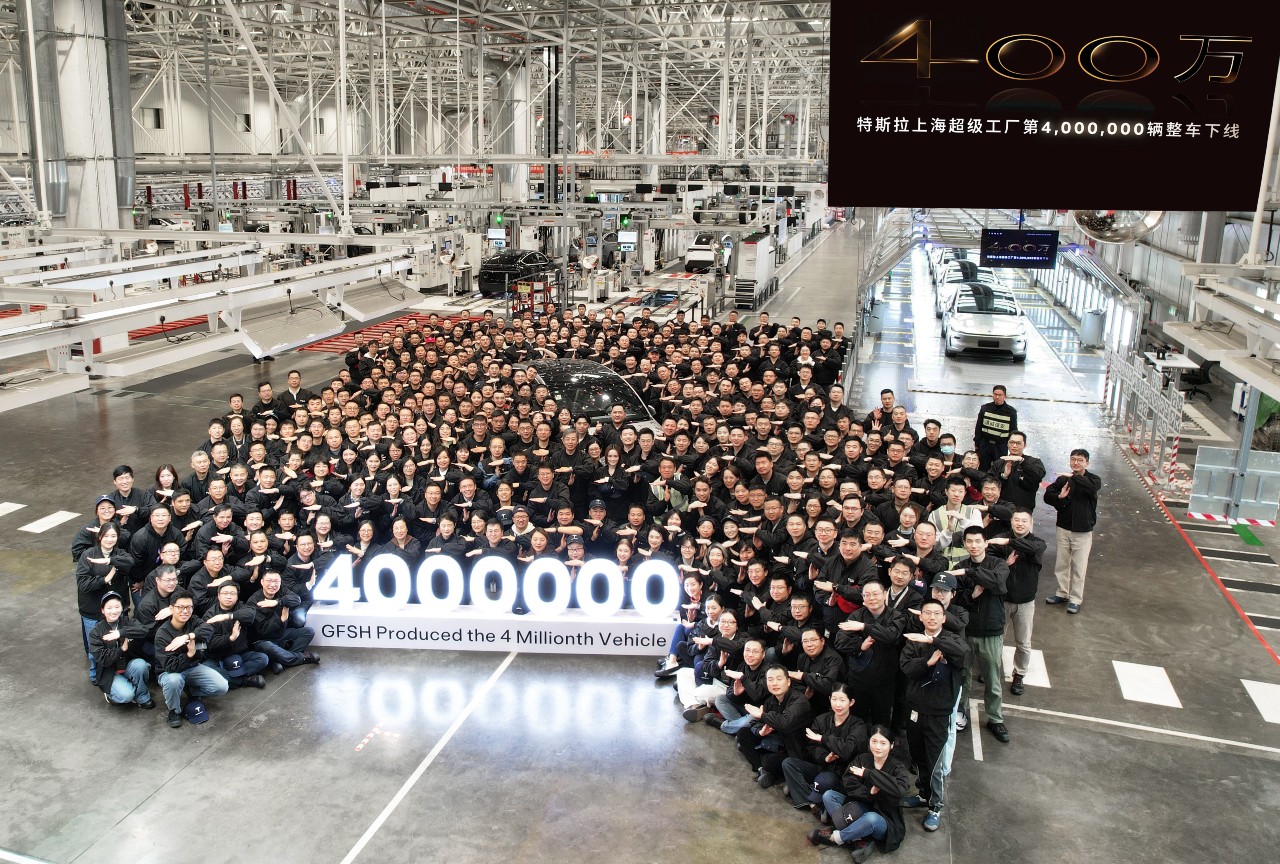
Tesla has announced a major milestone at its Chinese manufacturing facility, Gigafactory Shanghai, confirming on Monday that it had built its four millionth vehicle.
Tesla Gigafactory Shanghai first started building cars back in October 2019 with Model 3 assembly, just ten months after the company broke ground on the plant’s 86-hectare piece of land.
First deliveries started in December 2019, with the first units being given to employees. By the end of 2020, the plant was building cars at a run rate of around 150,000 vehicles annually. Production continued to ramp up, and by September 2023, less than three years after it started building Tesla’s EVs, it had built its two millionth vehicle.
Fast forward to December 2025, and Tesla has confirmed that four million cars have rolled off of production lines at the plant, a major milestone in the six short years it has been active:
Produced our 4 millionth vehicle at Gigafactory Shanghai🎉
Thanks to all our owners and supporters❤️ pic.twitter.com/DayVXUr220— Tesla Asia (@Tesla_Asia) December 8, 2025
The capacity at Giga Shanghai is exceeding 950,000 vehicles per year, and this year, the company has delivered 675,000 cars through the first three quarters. It is also the only plant to manufacture the Model Y L, a longer wheel-based configuration of the all-electric crossover that is exclusive to the Chinese market.
Gigafactory Shanghai’s four million cars have not all stayed within the domestic market, either. For a considerable period, the factory was exporting a significant portion of its monthly production to Europe, helping Gigafactory Berlin supplement some Model Y volume and all of its Model 3 deliveries. This is due to the Berlin plant’s exclusive production plans for the Model 3.
The site is one of the most crucial in the company’s global plans, and Gigafactory Shanghai’s incredible pace, which has led to four million production units in just about six years. It’s fair to say that it won’t be long until we’re seeing Tesla celebrate the plant’s five millionth vehicle produced, which should happen sometime late next year or in early 2027, based on its current manufacturing pace.
The company also builds the Megapack on the property in an adjacent Megafactory.
News
Tesla gamifies Supercharging with new ‘Charging Passport’
It will also include things like badges for special charging spots, among other metrics that will show all of the different places people have traveled to plug in for range.
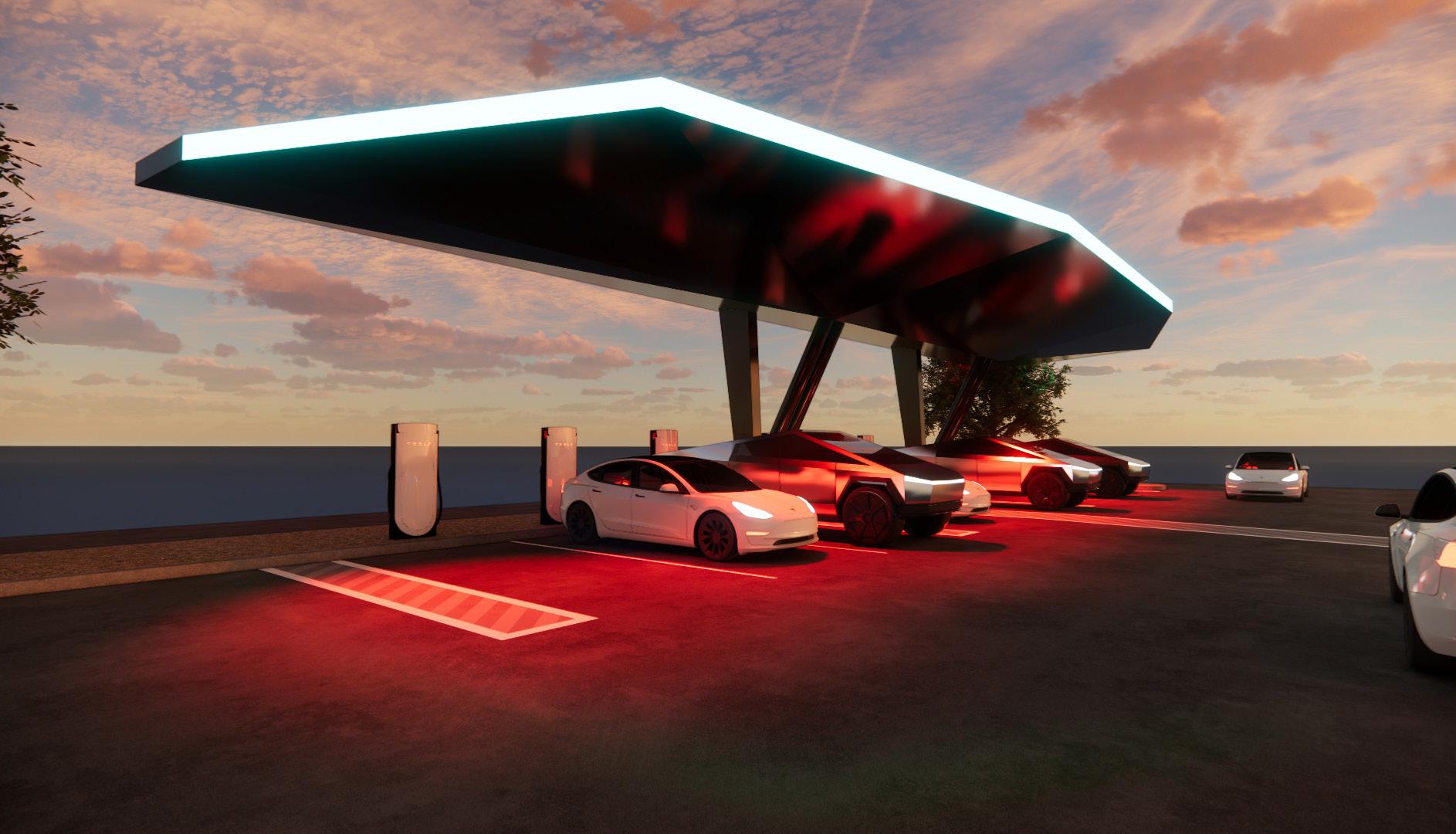
Tesla is gamifying its Supercharging experience by offering a new “Charging Passport,” hoping to add a new layer to the ownership experience.
While it is not part of the Holiday Update, it is rolling out around the same time and offers a handful of cool new features.
Tesla’s Charging Passport will be available within the smartphone app and will give a yearly summary of your charging experience, helping encapsulate your travel for that year.
It will also include things like badges for special charging spots, among other metrics that will show all of the different places people have traveled to plug in for range.
Tesla has just introduced “Charging Passport,” a new yearly summary of your charging.
• Charging badges: Iconic Charging badge (for visiting places like the Tesla Diner, Oasis Supercharger, etc), Explorer badge, green saver badge, etc.
• Total unique Superchargers visited
•… pic.twitter.com/c1DHTWXpj7— Sawyer Merritt (@SawyerMerritt) December 8, 2025
Tesla will include the following metrics within the new Charging Passport option within the Tesla app:
- Charging badges: Iconic charging badges for visiting places like the Tesla Diner, Oasis Supercharger, etc., Explorer Badge, and more
- Total Unique Superchargers Visited
- Total Charging Sessions
- Total Miles Added during Charging Sessions
- Top Charging Day
- Longest Trip
- Favorite Charging Locations
This will give people a unique way to see their travels throughout the year, and although it is not necessarily something that is needed or adds any genuine value, it is something that many owners will like to look back on. After all, things like Spotify Wrapped and Apple Music Replay have been a great way for people to see what music they listened to throughout the year.
This is essentially Tesla’s version of that.
With a handful of unique Superchargers already active, Tesla is also building some new ones, like a UFO-inspired location in New Mexico, near Roswell.
Tesla is building a new UFO-inspired Supercharger in the heart of Alien country
